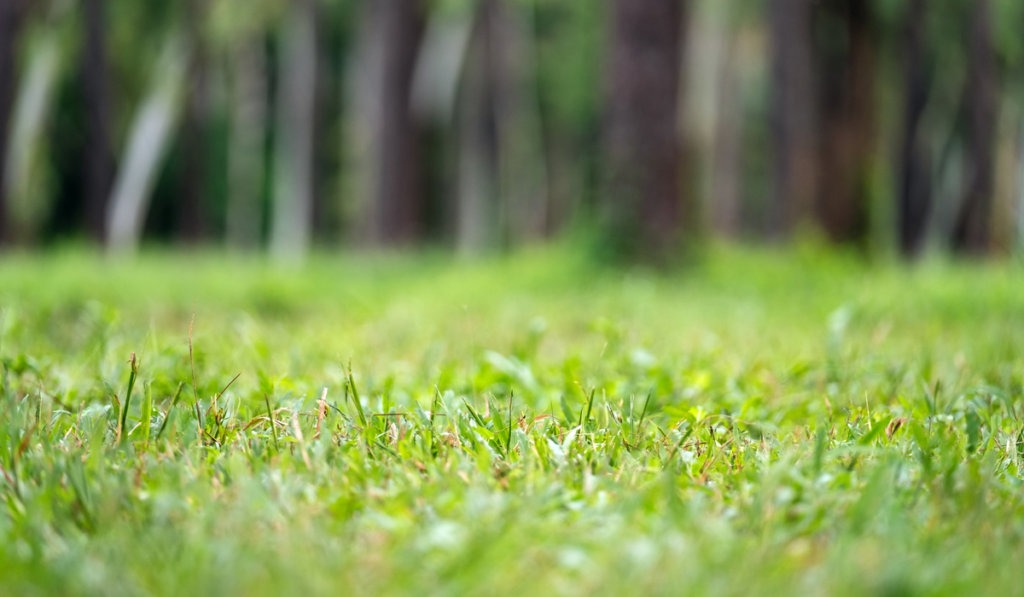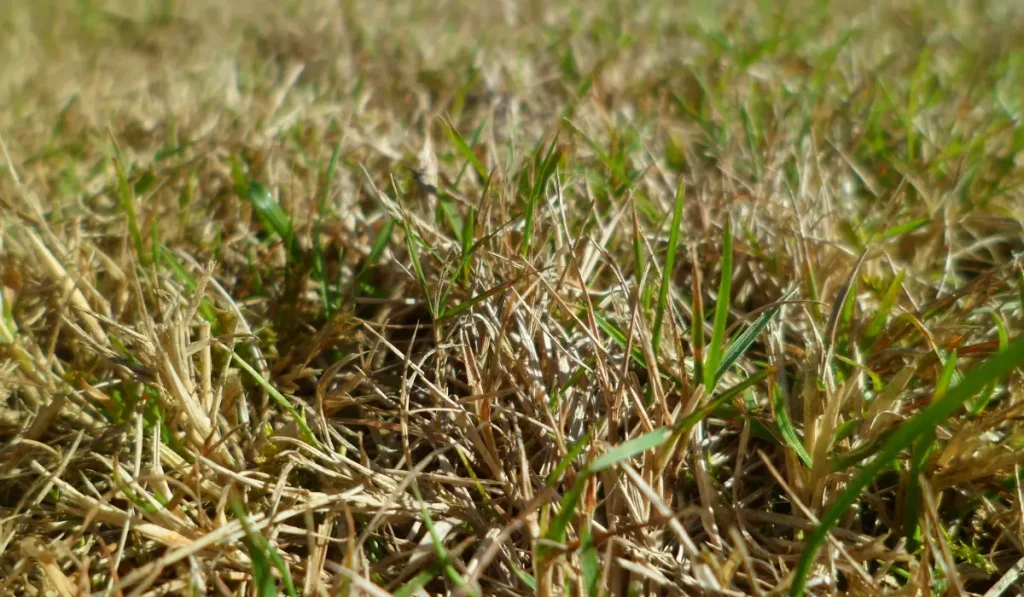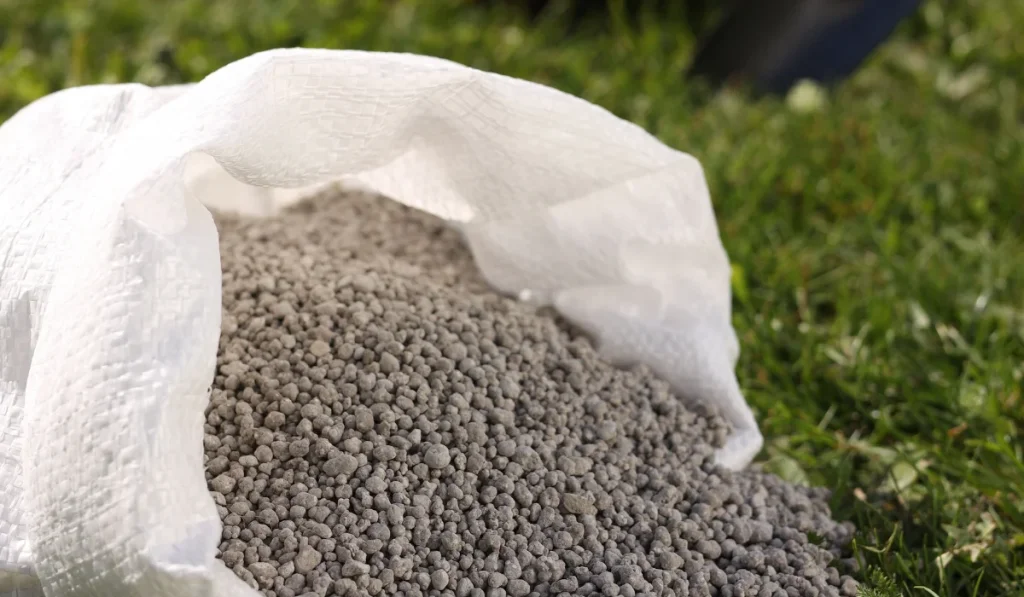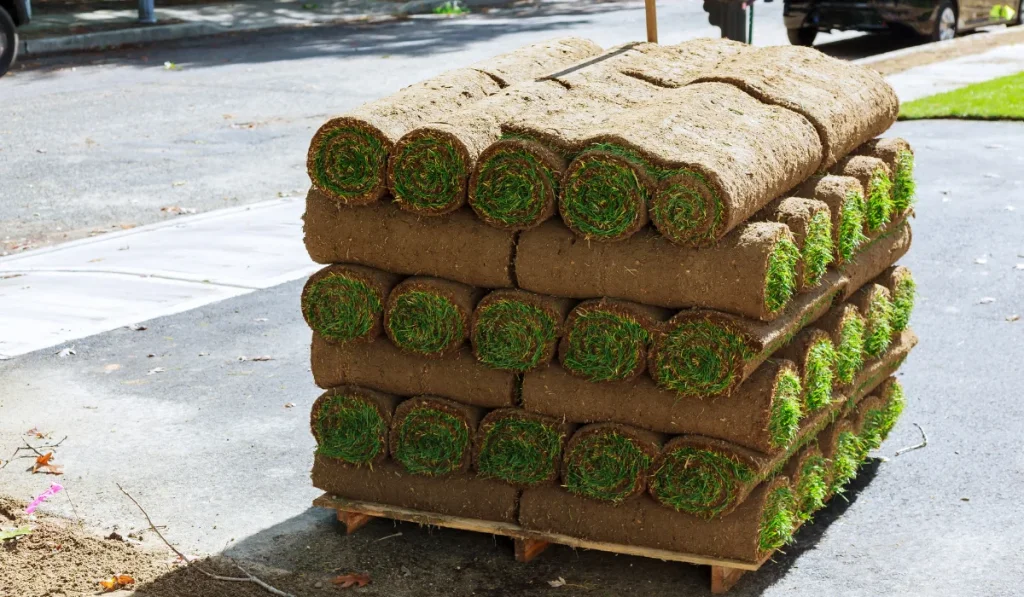If you are looking for a beautiful lawn that requires little maintenance, it’s worth considering tall fescue, a balanced, dependable sod that will breathe new life into your yard.
Key Takeaways:
- Tall fescue sod is a mixture of 90% tall fescue and 10% bluegrass.
- It is ideal for home lawns as it can withstand moderate amounts of foot traffic and extreme drought.
- Tall fescue sod is prized for its ability to stay green throughout most of the year, even in hot or dry conditions.
What is 90-10 Tall Fescue Sod?
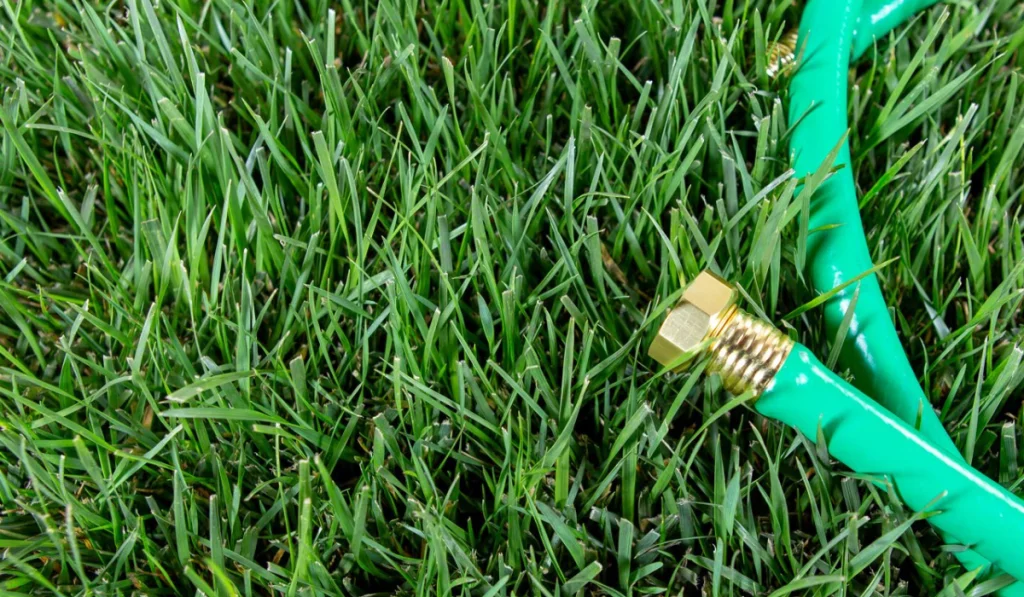
Tall Fescue Sod is a hardy grass that is able to withstand both hot and cold weather. The blades of the grass are a deep green color, and the sod has a dense, mat-like structure.
This sod is relatively easy to care for, and it does not require as much fertilization or watering as other types of grasses, making
90-10 Tall Fescue Sod a popular choice for both commercial and residential applications.
90% Tall Fescue / 10% Bluegrass:
Tall fescue sod is a blend of two common grass types in the United States: tall fescue and bluegrass.
Tall fescue is a seed grass, meaning it grows from seed instead of rhizomes or stolons. It’s classified as a “cool-season” grass, which means it grows best in the spring and fall. Tall fescue is a perennial, so it will come back year after year. It’s often used in lawns because it’s very tolerant of heat and drought.
There are several tall fescue varieties, but most tall fescue lawns need to be mowed about once a week during the growing season. The best time to seed tall fescue is in the fall, but it can also be done in the spring. Tall fescue grows best in full sun, but it will also do well in partial shade.
Many homeowners who seed a new lawn mix tall fescue with another grass, such as perennial ryegrass. This will give your lawn a more even appearance until the tall fescue has fully established itself.
Of course, bluegrass is a great choice, too. Bluegrass is a type of grass that is commonly used for lawns, golf courses, and athletic fields. There are several different varieties of bluegrass, but the most common is Kentucky bluegrass.
Bluegrass is a cool-season grass, which means that it grows best in temperatures between 60 and 75 degrees Fahrenheit, unlike warm-season grasses, which prefer warmer growing conditions. It is also a turf-type grass, which means that it forms a dense mat of blades that is resistant to foot traffic and wear. Bluegrass is relatively low maintenance, although it does require regular mowing and watering to stay healthy.
Here are a few more key characteristics of this sod type:
| Color | Emerald green |
| Drought Tolerance | 9/10 |
| Disease Tolerance | 8/10 |
| Shade Tolerance | 7/10 |
| Heat Tolerance | 10/10 |
| Winter Color | 10/10 |
| Recovery from Moderate Wear | 9/10 |
Pros of Choosing 90-10 Tall Fescue Sod
There are many reasons to choose 90-10 tall fescue sod for your landscaping needs.
For one, it is a very versatile grass able to adapt to a variety of soil and climate conditions. It also has a deep root system that helps to anchor the soil in place, making it an excellent choice for areas prone to erosion.
Tall fescue sod is also very drought-tolerant, meaning it will continue to thrive even during periods of extended dry weather. Additionally, tall fescue grass has a fine-bladed texture that gives it a beautiful, manicured look. It is also relatively low-maintenance, requiring only occasional mowing and watering.
Once established, tall fescue sod forms an extensive root system, so even broadleaf weeds shouldn’t be too much of a problem.
Finally, it can be mowed as low as two inches, making it easy to keep your lawn looking neat and tidy. With so many benefits, it is no wonder that 90-10 tall fescue sod is one of the most popular choices for homeowners and landscapers alike.
Cons of Choosing 90-10 Tall Fescue Sod
While it can tolerate partial shade, it won’t do well in full shade. Additionally, it’s not as tolerant of diseases and insects as some other types of sod, so you’ll need to be extra diligent about pest control.
Finally, while it recovers okay from moderate wear, it’s not the best option for areas that will see a lot of wear and tear, such as playgrounds or athletic fields. With all that in mind, 90-10 tall fescue sod may not be the best choice for every situation. Maintenance Tips for 90-10 Tall Fescue Sod
This type of sod is known for its density and deep roots, making it an ideal choice for high-traffic areas. Here are a few tips to help you keep your sod healthy and looking its best.
Watering
If you’ve just installed tall fescue sod, you’re probably wondering how often to water it. The answer depends on a few factors, including the time of year and the amount of rainfall.
In general, you should water your sod two to three times a week for the first few weeks, then reduce watering to once a week as the roots begin to establish themselves.
During the hottest months, you may need to water more often to prevent your sod from drying out, though it is a fairly drought-tolerant type of grass.
Be sure to check the soil regularly so that you don’t overwater or underwater your sod.
With a little care, your tall fescue sod will thrive and provide you with a beautiful lawn for years to come.
Fertilization
Fertilizing your tall fescue sod is an important part of keeping it healthy and green. While the exact fertilizer requirements will vary depending on your location and climate, there are a few general tips that can help you get started.
Fertilizer is essential for a healthy lawn, but it’s important to choose the right type of fertilizer for your sod. If you use too much fertilizer, it can cause the sod to become “burned.” The best way to avoid this is to use a slow-release fertilizer that will gradually release nutrients over time.
For example, you could choose a fertilizer with a high nitrogen content for the spring and summer months, when grass is actively growing. Then, in the fall and winter, you could switch to a fertilizer with a higher phosphorus content to help the roots grow strong.
Second, be sure to apply the fertilizer evenly over the entire lawn. Uneven application can lead to brown patches and bare spots. In heavy clay soils, you may need to aerate prior to fertilizing so that the fertilizer soaks in rather than just sitting on the leaf blades or the soil surface.
Finally, keep in mind that too much fertilizer can be just as harmful as too little. Be sure to follow the manufacturer’s instructions carefully to avoid over-fertilizing your sod.
Mowing
Most people think of mowing the lawn as a way to keep it looking neat and tidy. However, mowing can also be an important part of lawn care. The right mowing height can help to promote the growth of healthy grass, while the wrong height can damage the grass and make it more susceptible to disease.
For tall fescue sod, you can mow it as low as two inches without harming the grass. Of course, you’ll need to take care not to scalp the sod, and you may need to adjust your mowing techniques slightly in order to achieve the desired results. But if you’re looking for a low-maintenance lawn, 90-10 tall fescue sod is the way to go.
Weed Control & Insect Prevention
Tall fescue sod is particularly susceptible to weed growth, but there are a few things you can do to help keep your home lawns looking neat and tidy.
First, make sure to mow regularly and at the correct height. This will help to prevent weeds, like crabgrass, from taking root and will also make it easier to spot and remove any that do manage to sprout up. Next, use an herbicide specifically designed for tall fescue lawn grasses. Be sure to follow the label instructions carefully, as over-application can damage your grass.
Finally, keep an eye out for insects that may be damaging your sod. If you see any suspicious activity, contact a professional pest control company for assistance. By taking these simple steps, you can help ensure that your tall fescue sod stays healthy and weed-free all season long.
The Bottom Line
If you are looking for a turfgrass that is durable, low-maintenance, and environmentally friendly, then 90-10 tall fescue may be the perfect choice for your sodding needs.
With its deep roots and thick growth, this grass can handle tough conditions while requiring little water or fertilizer. And since it doesn’t produce much thatch, you won’t have to spend time raking and cleaning up clippings.
So if you are considering replacing your current lawn with sod in the near future, be sure to give 90-10 tall fescue a try!
